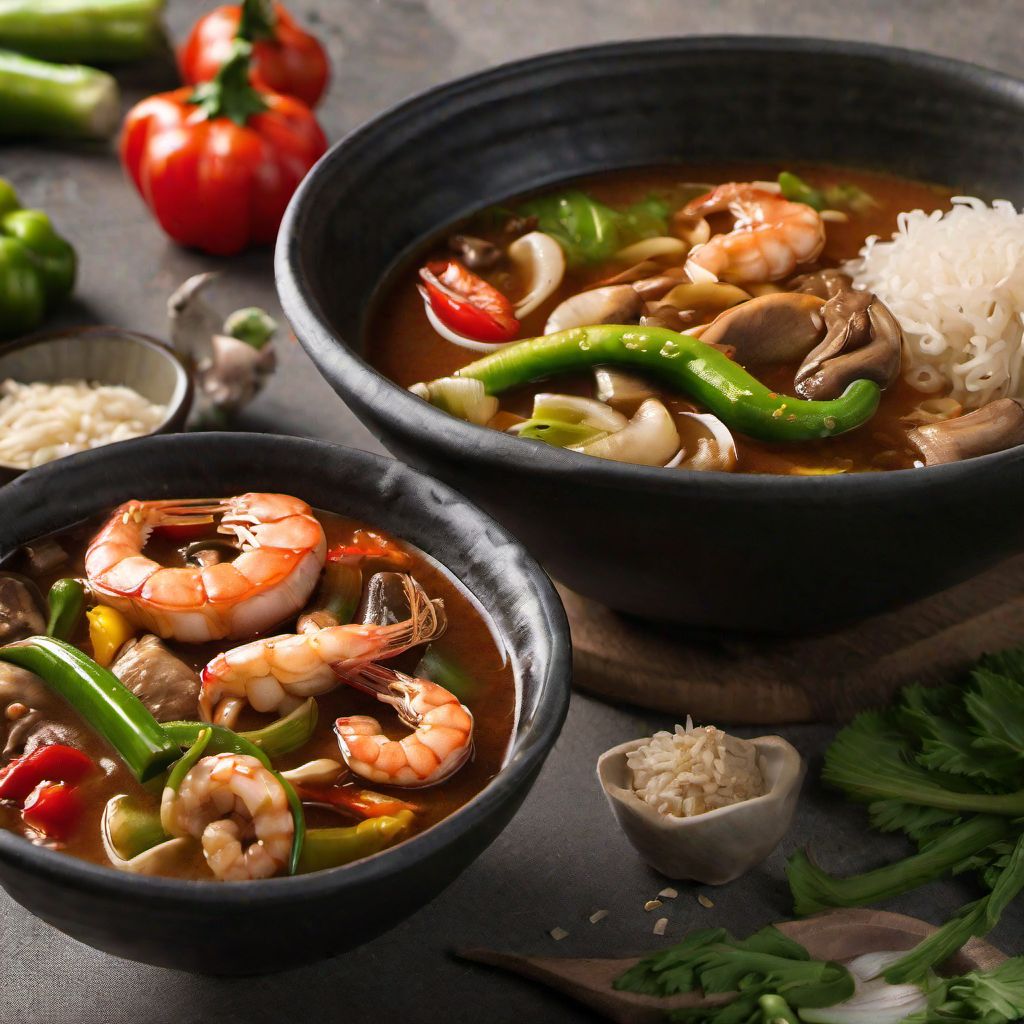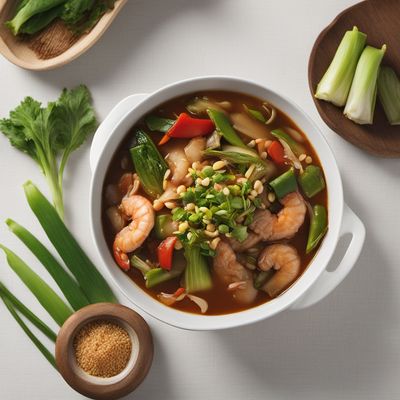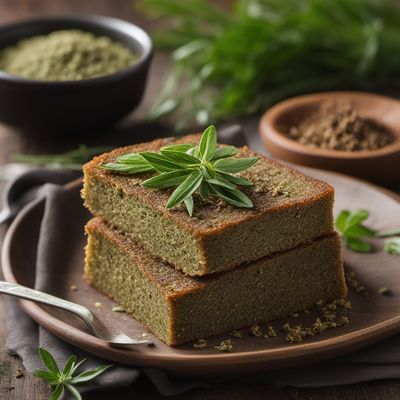
Recipe
Korean-style Gumbo
Kimchi Gumbo: A Fusion of Flavors
4.8 out of 5
In the vibrant world of Korean cuisine, we introduce a unique twist to the classic American dish, Gumbo. This Korean-style Gumbo combines the rich flavors of traditional Gumbo with the bold and spicy elements of Korean cuisine. Get ready to embark on a culinary adventure that will tantalize your taste buds and leave you craving for more.
Metadata
Preparation time
20 minutes
Cooking time
40 minutes
Total time
60 minutes
Yields
4 servings
Preparation difficulty
Medium
Suitable for
Omnivore, Pescatarian, Gluten-free, Dairy-free, Low-carb
Allergens
Shellfish, Soy
Not suitable for
Vegan, Vegetarian, Paleo, Keto, Nut-free
Ingredients
While the original American Gumbo is known for its combination of meat, seafood, and vegetables, the Korean-style Gumbo incorporates Korean ingredients and flavors. The addition of kimchi, gochujang (Korean chili paste), and other Korean spices gives this dish a fiery kick and a distinct umami taste. The fusion of these two cuisines creates a harmonious blend of flavors that is both comforting and exciting. We alse have the original recipe for Gumbo, so you can check it out.
-
2 tablespoons (30ml) vegetable oil 2 tablespoons (30ml) vegetable oil
-
1 onion, diced 1 onion, diced
-
3 cloves of garlic, minced 3 cloves of garlic, minced
-
1 tablespoon (15g) gochujang (Korean chili paste) 1 tablespoon (15g) gochujang (Korean chili paste)
-
1 teaspoon (5g) Korean red pepper flakes 1 teaspoon (5g) Korean red pepper flakes
-
1 cup (200g) kimchi, chopped 1 cup (200g) kimchi, chopped
-
1 cup (150g) bell peppers, diced 1 cup (150g) bell peppers, diced
-
1 cup (150g) okra, sliced 1 cup (150g) okra, sliced
-
1 cup (150g) mushrooms, sliced 1 cup (150g) mushrooms, sliced
-
1 cup (200g) chicken, diced 1 cup (200g) chicken, diced
-
1 cup (200g) shrimp, peeled and deveined 1 cup (200g) shrimp, peeled and deveined
-
4 cups (950ml) chicken broth 4 cups (950ml) chicken broth
-
1 can (400g) diced tomatoes 1 can (400g) diced tomatoes
-
2 tablespoons (30ml) soy sauce 2 tablespoons (30ml) soy sauce
-
1 tablespoon (15ml) fish sauce 1 tablespoon (15ml) fish sauce
-
1 tablespoon (15ml) Worcestershire sauce 1 tablespoon (15ml) Worcestershire sauce
-
1 teaspoon (5g) sugar 1 teaspoon (5g) sugar
-
Salt and pepper to taste Salt and pepper to taste
-
Cooked rice, for serving Cooked rice, for serving
-
Chopped green onions, for garnish Chopped green onions, for garnish
Nutrition
- Calories (kcal / KJ): 350 kcal / 1465 KJ
- Fat (total, saturated): 12g, 2g
- Carbohydrates (total, sugars): 25g, 8g
- Protein: 30g
- Fiber: 5g
- Salt: 2g
Preparation
-
1.Heat the vegetable oil in a large pot over medium heat. Add the diced onion and minced garlic, and sauté until fragrant and translucent.
-
2.Stir in the gochujang and Korean red pepper flakes, and cook for an additional minute.
-
3.Add the chopped kimchi, bell peppers, okra, mushrooms, chicken, and shrimp to the pot. Cook until the chicken is no longer pink and the shrimp turns pink.
-
4.Pour in the chicken broth and diced tomatoes. Stir in the soy sauce, fish sauce, Worcestershire sauce, sugar, salt, and pepper.
-
5.Bring the mixture to a boil, then reduce the heat to low and let it simmer for 30 minutes, allowing the flavors to meld together.
-
6.Serve the Korean-style Gumbo over cooked rice and garnish with chopped green onions.
Treat your ingredients with care...
- Kimchi — If you prefer a milder flavor, rinse the kimchi before chopping it.
- Gochujang — Adjust the amount of gochujang according to your spice preference.
- Korean red pepper flakes — Use more or less depending on your desired level of heat.
- Shrimp — Be careful not to overcook the shrimp to maintain its tenderness.
- Okra — To reduce the sliminess of okra, you can blanch it in boiling water for a few minutes before adding it to the Gumbo.
Tips & Tricks
- For a heartier version, you can add additional vegetables such as carrots or potatoes.
- Adjust the spiciness by adding more or less gochujang and Korean red pepper flakes.
- Serve the Gumbo with a side of traditional Korean pickled vegetables for added flavor and texture.
- If you prefer a thicker consistency, you can mix a tablespoon of cornstarch with water and add it to the Gumbo during the simmering process.
- Leftovers can be stored in the refrigerator for up to three days and reheated for a quick and delicious meal.
Serving advice
Serve the Korean-style Gumbo hot over a bed of cooked rice. Garnish with chopped green onions for a fresh and vibrant touch. Provide additional gochujang on the side for those who enjoy extra spiciness. Serve with a side of Korean pickled vegetables to complement the flavors of the dish.
Presentation advice
Present the Korean-style Gumbo in a deep bowl, allowing the vibrant colors of the ingredients to shine through. Place a scoop of cooked rice in the center of the bowl and ladle the Gumbo over it. Garnish with a sprinkle of chopped green onions for added freshness. Serve with a side of Korean pickled vegetables for a visually appealing and flavorful presentation.
More recipes...
For Gumbo » Browse all
For American cuisine » Browse all
More American cuisine dishes » Browse all

Avocado Crazy
Avocado Crazy is a delicious and healthy dish that is perfect for breakfast, lunch, or dinner. It is made with ripe avocados, eggs, and a variety...

Graham Bread
Graham bread is a type of bread made from whole wheat flour that is coarsely ground. It is a popular bread in the United States and is often used...

Senate Bean Soup
Senate Bean Soup is a traditional American soup made with navy beans and ham. It is a hearty and flavorful dish that is often served in the United...
More Korean cuisine dishes » Browse all

Korean Corn Cheese
Korean Corn Cheese is a popular Korean dish that is made by mixing corn with cheese and other seasonings. This dish is often served as a side dish...

Leems
Leems is a traditional Korean side dish made from fermented vegetables. It is similar to sauerkraut or kimchi, but has a milder flavor and a...

Naengmyeon
Cold buckwheat noodles soup
Naengmyeon is a Korean cold noodle dish that is perfect for hot summer days. The dish consists of thin, chewy noodles made from buckwheat, potato,...









